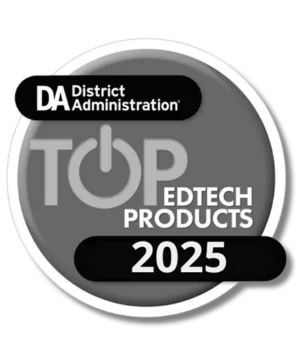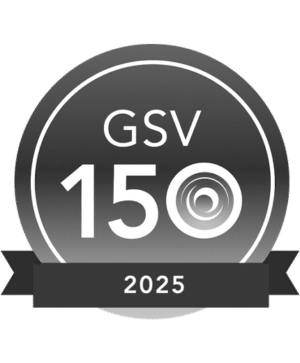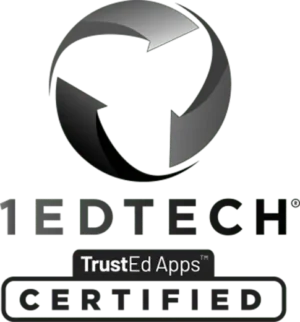
Jennifer Conley, instructional coach in Indiana, offers a fresh approach to PD, inviting us to turn the classroom into a lab where teachers can observe, experiment, and practice new strategies in a low-stakes environment.
Professional development can be uninspiring and tedious, particularly when already busy teachers are talked to, demonstrated at, and then told to bring practices back to their classrooms. Perhaps the instructional coach can jump into the classroom to provide the true job-embedded PD that transforms practice, but often it’s at a much later date.
This kind of disjointed professional learning takes a long time, adds to an already busy teacher’s plate, and is frankly ineffective. There has to be a better way!
The Inspiration
Celena Larkey, a former staff developer for the Teachers College Reading and Writing Project, introduced me to the idea of lab sites. She turns one teacher’s classroom into a laboratory, a place for experimentation, observation, and practice.
To do this she first pulls a group of teachers together outside of the classroom and teaches them something new for a brief period of time. During the next part of the training, the entire group of teachers enters the lab site and watches Celena put into action what she just taught. She provides a voice-over in the lab site, explaining the moves she’s making while she demonstrates. This makes for an engaging and effective training.
Some Considerations
As coaches, we’re vulnerable to criticism and judgment from some of the teachers we serve. Jumping into a lab site and teaching live in front of a group of teachers can seem scary, but being open to that vulnerability, and taking risks to learn and grow professionally is invaluable. Not only do teachers get to spend time in the learning zone, but so do you—making you a better teacher and coach!
The key is to make the lab site low-stakes. It should be a place where everyone feels comfortable practicing, making mistakes, and learning. It becomes a place not only to watch the coach and ask questions, but a place where teachers themselves can practice and get feedback in the moment.
A Real Life Example
I planned a three-hour PD session to support a group of third-grade intermediate teachers on methods for teaching syllable types and division. Here’s how those three hours played out.
Learning
We met first in our collaboration room, where I spent about an hour teaching—looking at theory, standards, research, and lesson plans. We then planned out an introductory lesson that could be taught to any group of students, and picked one of the teachers’ classrooms to be our lab site.
Modeling
As a group, we walked down to the classroom where I modeled a syllable lesson with the class. I voiced over different parts of the lesson to point out specific parts or instructional strategies, saying things like, “Notice how I added the multi-sensory component of hand motions here,” and “As students practice, I’m walking around and jotting down things I notice about student performance.” Teachers watched, took notes, and asked any questions they might have had while we were in our lab site.
Once I got done modeling the lesson, we all went back to the collaboration room to debrief. This time together allowed teachers to ask questions and meant I could answer them while all our learning was still fresh in our minds.
Handing Over the Reins
Then it was the teachers’ turn to plan and teach a new lesson on syllables. They worked with a partner and I supported their planning as necessary. Planning complete, we ventured back into the lab site. Each teacher took a small group of students from the class and taught their new lesson to them.
This low-stakes situation with a small group of students provided the perfect opportunity for practice and growth. I was able to walk around and give feedback, answer questions, and watch for any misconceptions.
Debriefing
After the teachers had a chance to teach their lessons, we met again in the collaboration room. To my surprise, there was new excitement in the building! Teachers discussed the new practices they just tried out, and we spent time co-planning more lessons they could take back into their classrooms immediately. Some teachers even took this opportunity to schedule a time for me to come watch or model lessons with their own students, creating a coaching invitation.
Final note
So far, I have received a lot of positive feedback from teachers after using lab sites as professional development. Students, too, are eager to learn and love to help “teach the teacher.” We now have schools filled with laboratories, and there’s excitement all around. I encourage you to try adding lab sites into your professional learning experiences—both you and the teachers you support will reap the benefits!
About our Guest Blogger
Jen Conley is an instructional coach at Cherry Tree Elementary in Carmel, IN. She has been in the field of education for thirteen years and feels blessed to be in a profession that she truly loves. As an instructional coach Jen gets to work alongside teachers to analyze student data, implement and refine instructional practices, and revel in the joys of teaching children.
Jen has presented at both local and national conferences on high ability education and technology integration. She worked alongside experts in the field of high ability education to write curriculum for the educators in the state of Indiana. Jen’s true love, though, is teaching students how to read, especially those who struggle. She enjoys sharing this passion with teachers through her coaching interactions.
Stay Connected
News, articles, and tips for meeting your district’s goals—delivered to your inbox.






















